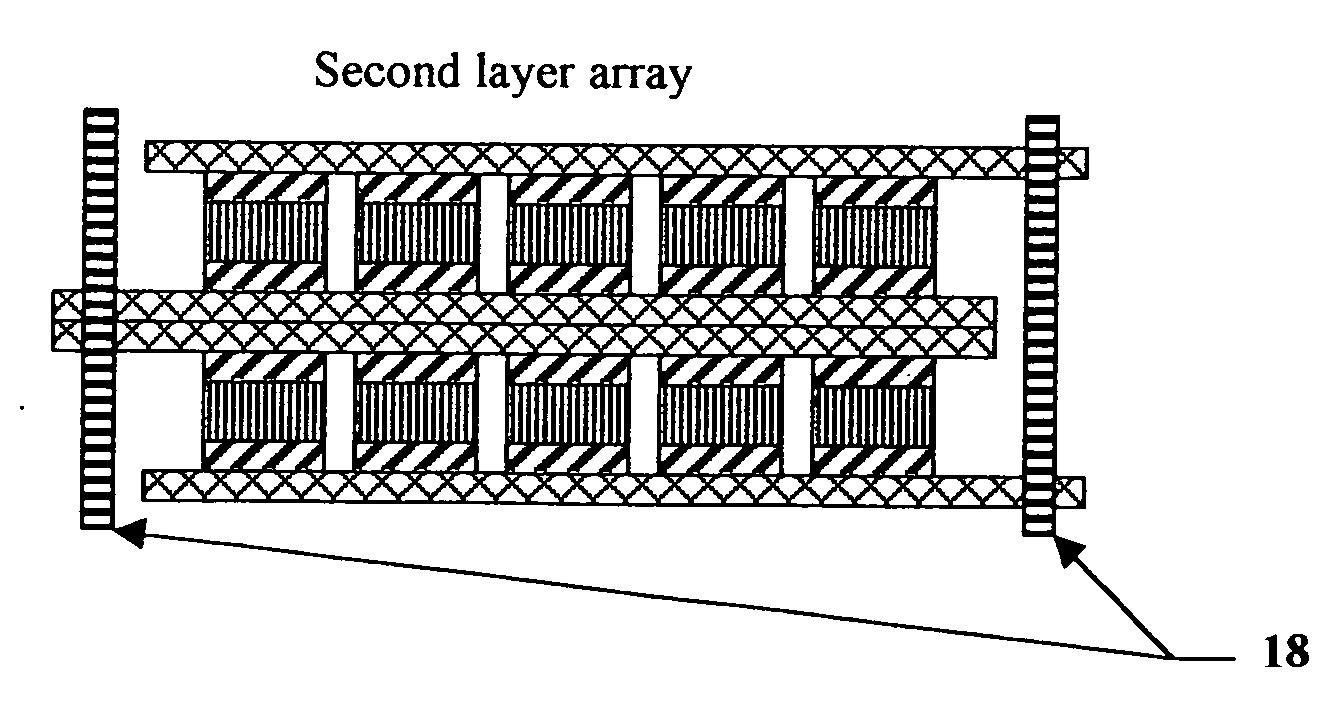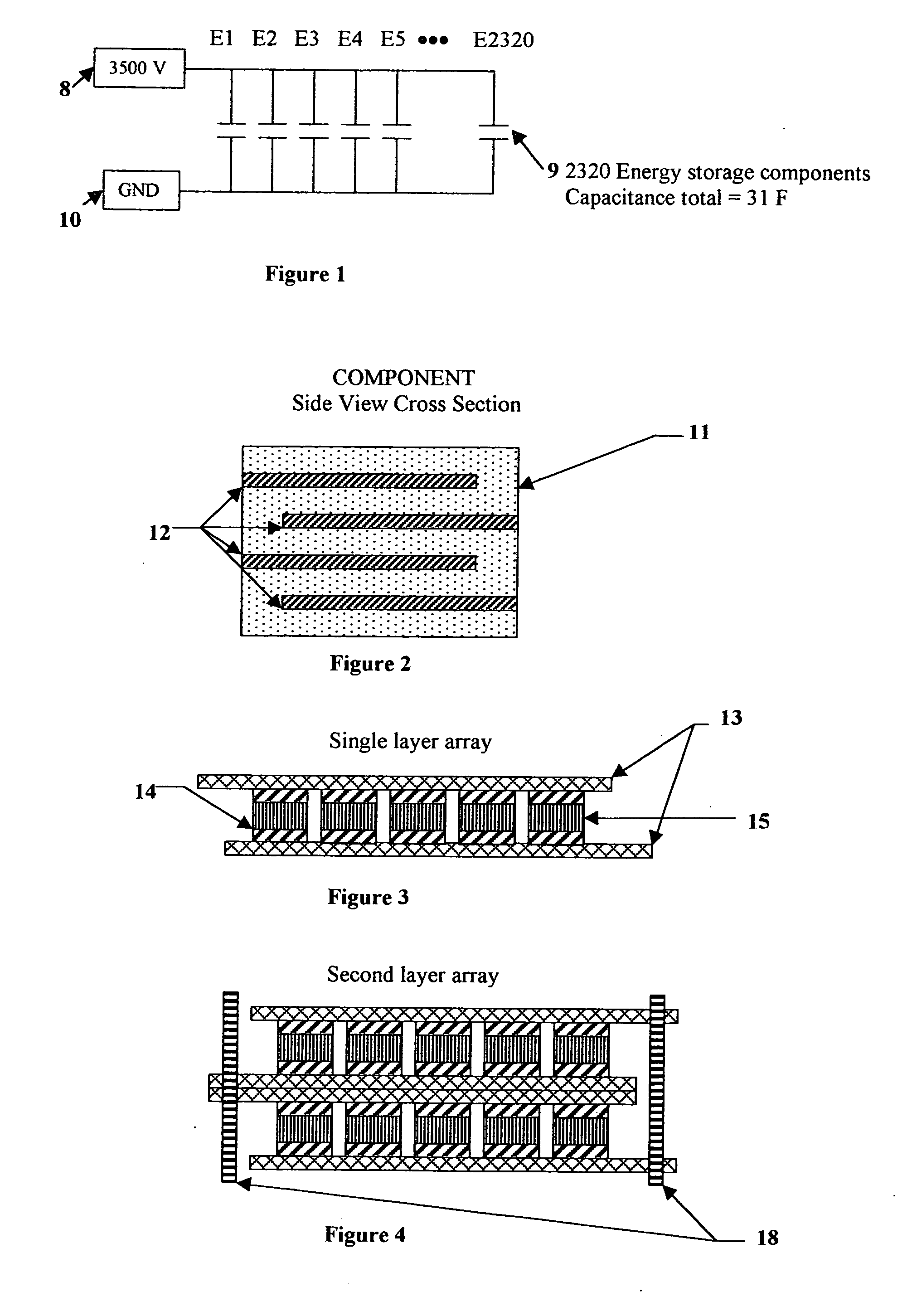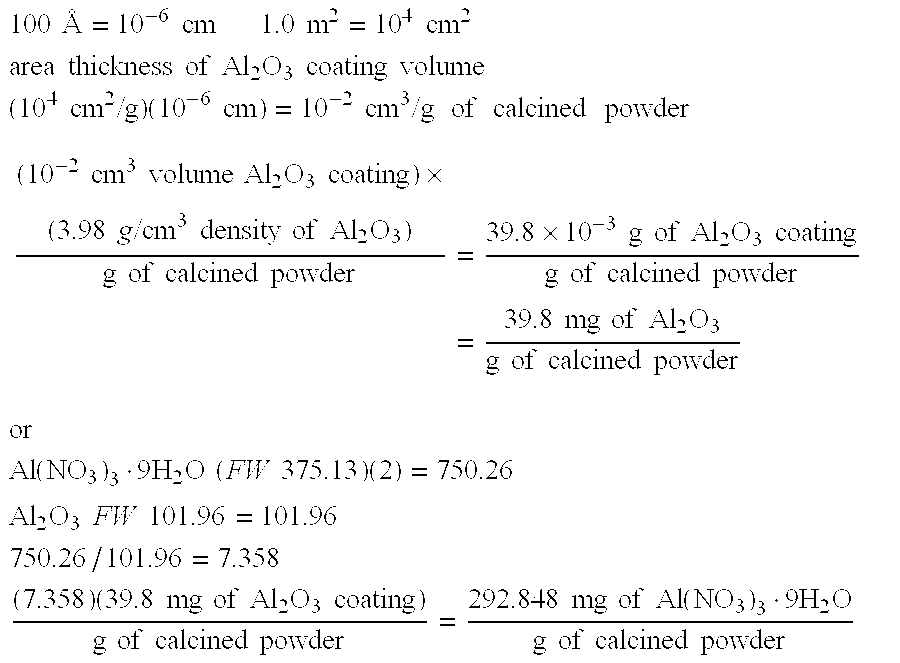Electrical-energy-storage unit (EESU) utilizing ceramic and integrated-circuit technologies for replacement of electrochemical batteries
a technology of electrochemical batteries and energy storage units, which is applied in the direction of fixed capacitors, natural mineral layered products, synthetic resin layered products, etc., to achieve the effects of reducing the life of the battery, rapid charging, and cost-effectiveness
- Summary
- Abstract
- Description
- Claims
- Application Information
AI Technical Summary
Benefits of technology
Problems solved by technology
Method used
Image
Examples
example
[0067] Capacitance of one layer=8.854×10−2 F / m×2.948×10−4×6.45×10−4 m2 / 12.7×10−6 m [0068] C=0.000013235 F
[0069] With 1000 layers: [0070] C=0.013235 F
[0071] The required energy storage is:
Et=14 hp×746 W / hp×5 h=52,220 W·h
[0072] The total required capacitance of the energy-storage unit:
Cr=Et×2×3600 s / h / V2=52,220 W·h×2×3600 s / h (3500 V)2
Cr=31 F
[0073] Number of capacitance components required:
Nc=31 F / 0.013235 F=2320
[0074] Volume and weight of energy-storage unit:
[0075] Volume of the dielectric material: Volume=area×thickness×number of layers=6.45 cm2×12.72×10-4 cm×1000=8.2 cm3[0076] Total volume=8.2 cm3×number of components (2320)=19,024 cm3 [0077] Density of the dielectric material=6.5 g / cm3 [0078] Weight of each component=density×volume=53.3 g [0079] Total weight of the dielectric material=53.3 g×2320 / 454 g per pound=272 pounds
[0080] Volume of the nickel conductor layers: [0081] Thickness of the nickel layer is 1×10−6 m [0082] Volume of each layer=6.45 cm2×1.0×...
PUM
| Property | Measurement | Unit |
|---|---|---|
| temperature | aaaaa | aaaaa |
| temperature | aaaaa | aaaaa |
| total capacitance | aaaaa | aaaaa |
Abstract
Description
Claims
Application Information
 Login to View More
Login to View More - R&D
- Intellectual Property
- Life Sciences
- Materials
- Tech Scout
- Unparalleled Data Quality
- Higher Quality Content
- 60% Fewer Hallucinations
Browse by: Latest US Patents, China's latest patents, Technical Efficacy Thesaurus, Application Domain, Technology Topic, Popular Technical Reports.
© 2025 PatSnap. All rights reserved.Legal|Privacy policy|Modern Slavery Act Transparency Statement|Sitemap|About US| Contact US: help@patsnap.com



